Can the Cedar Plank Used to Cook Cedar Planksalmon Be Used Again
I'm writing this to you in the middle of January. It is cold, it is still rather dark, and I have made a decent start on eating better this year. (Don't worry, a certain large football game will be coming up soon to put an end to that.) I've already baked homemade bread and I've used leftovers for truly delicious soups. It feels good both physically and mentally. Before I go and jump face-first into a plate of chili cheese fries in a couple weeks, I thought it would be nice to do another dish that fits my post-holiday rehab program. But, you know how we run this blog. We're not into boring food here. So it's going to be delicious grilled cedar plank salmon!
Salmon is America's favorite fin-fish. The average American consumes about 2.4 pounds per year, 2 which is saying something, considering that 56% of us only eat any seafood (including canned tuna) twice a month. So those that eat seafood are eating a lot of salmon!
Well, who can blame them? It's delicious, it's readily available, and it stands up to many and various cooking techniques and flavors. Here, we'll talk about grilling salmon on a cedar plank—a fun and nearly fool-proof way to get your salmon cooked just right every time. Let's jump in!
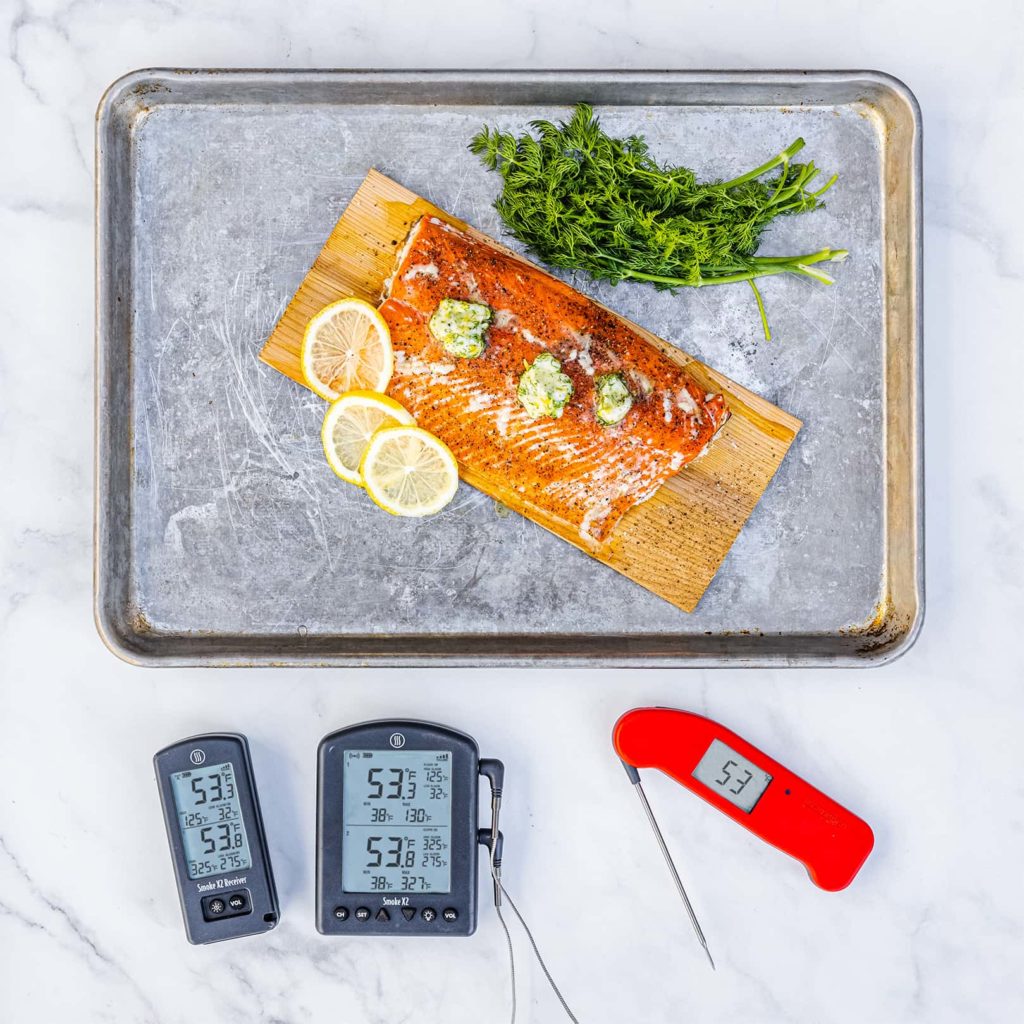
Grilling salmon: what's with the cedar plank?
It may seem strange to cook a piece of fish directly on a wooden plank. Why do it? For two reasons: flavor and control.
Cedar plank flavor
Cooking salmon on a cedar plank tastes good. Have you ever smelled freshly sawn cedar or tossed a piece of cedar onto a crackling fire? It smells amazing. By cooking salmon on a cedar plank you transfer those natural aromatic oils from the wood into the fish, giving it a woodsy, wild flavor that you just can't get anywhere else.
Cooking salmon on a cedar plank is popular in Native Pacific Northwest cookery as well as in Finnish cookery. Though the method differs in the two regions, it is used in both cultures for flavoring the fish. I think that if you give it a try, you'll also love the unique, woody flavor that the method imparts to your fish.
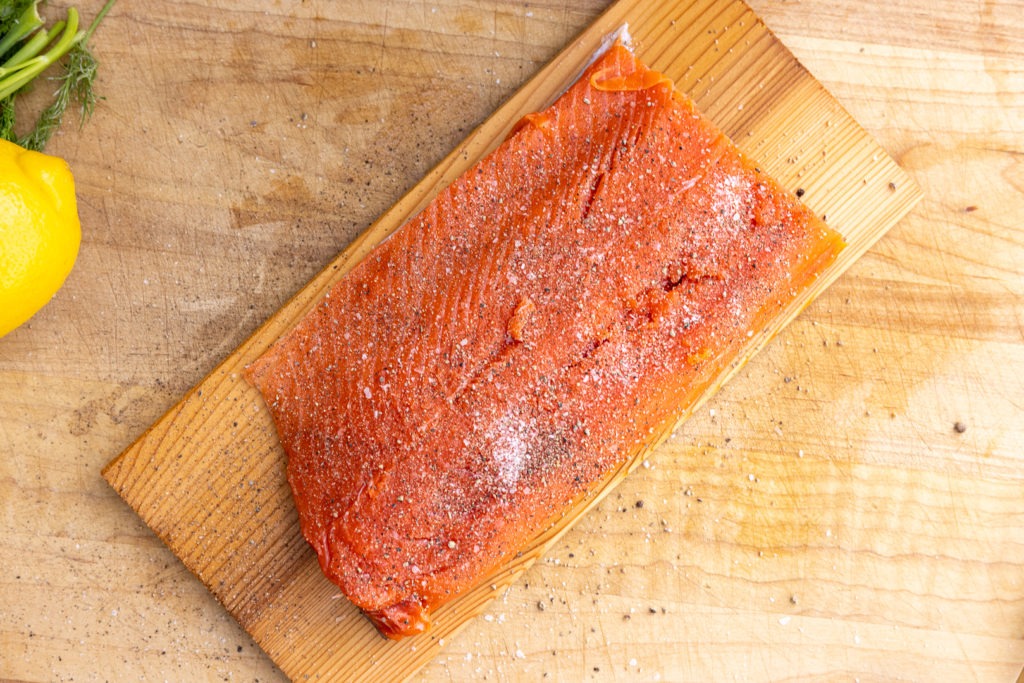
Cedar planks for heat control
The other advantage to the Pacific Northwest method of cedar plank cooking is heat management. Unless you do everything just right when you grill salmon, it is easy to have the fish stick to the grill or overcook in the direct heat. By placing the salmon on a wooden plank, you create an insulative barrier under the fish that will help keep it from overcooking.
Of course, you don't just pick up a fence slat from your local big box hardware store. Your cedar plank needs to be made of untreated wood—we want natural essential oils getting in our food, not chemical treatments for weatherproofing! You can often find the proper slats at good butchers, many grocery stores, or your local BBQ specialty store.
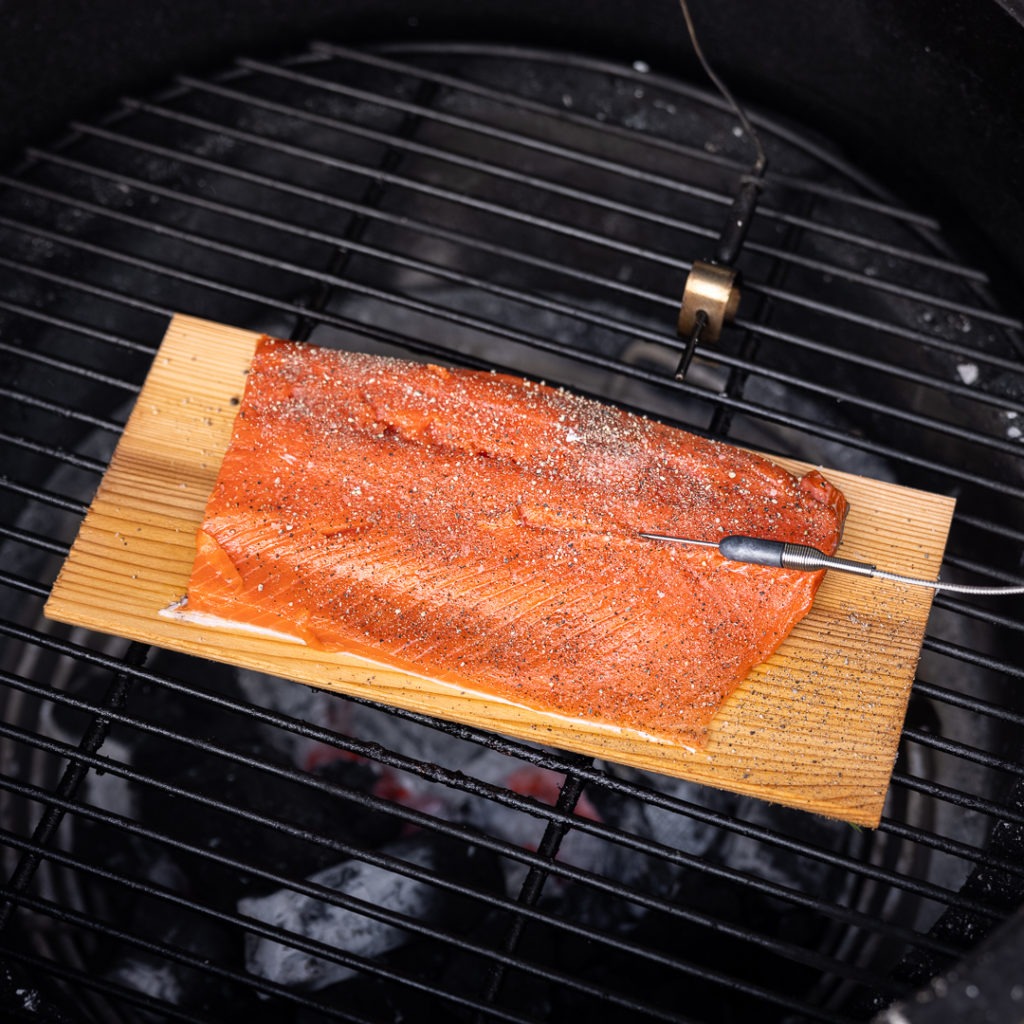
And you don't just slap some fish on there and throw it on the fire (though that isn't far off). You need to soak the wood for a couple of hours before you cook. Soaking prevents the plank from bursting into flame as soon as the fire licks it and it creates a heat-mitigating atmosphere in its immediate vicinity, i.e. around your fish.
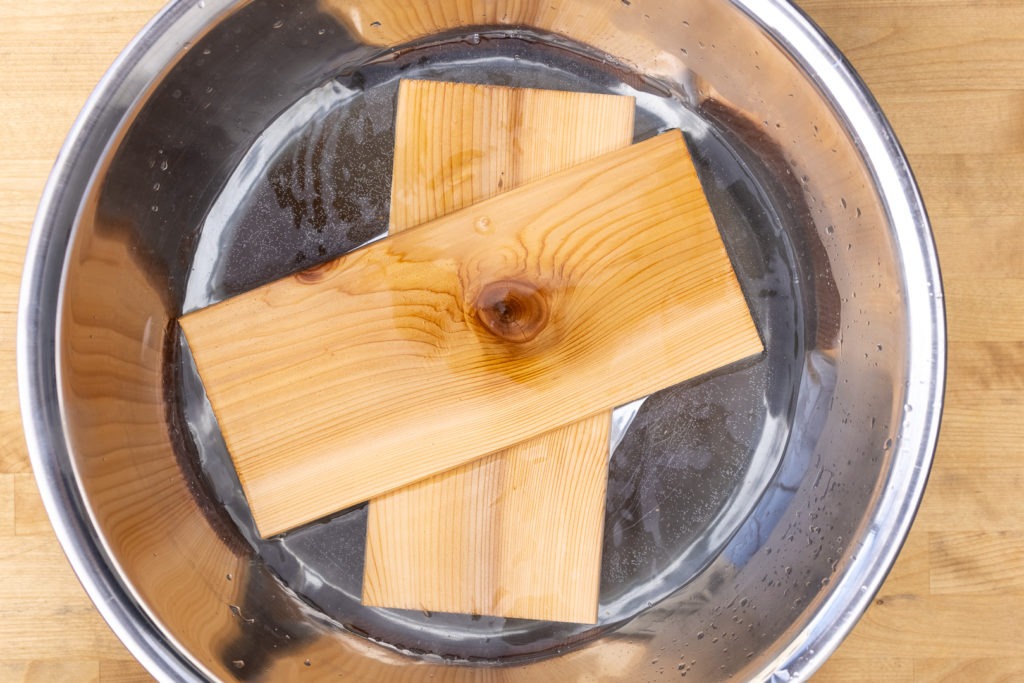
Critical temperatures to cook salmon on a cedar plank
According to Susie Bulloch at HeyGrillHey.com, you'll want to heat your grill so that it's in the 375–400°F (191–204°C) range for cedar-planking salmon. We set up our Kamado-style cooker with Smoke X2™ and Billows™ BBQ temperature control fan and set the target temp to 375°F (191°C). When it was time to cook, we put the cedar plank and fish right on the grill grate without the deflector plate, probed our salmon with a 2.5″ needle probe (perfect for thin and delicate cuts like fish), closed the lid, and let it cook.
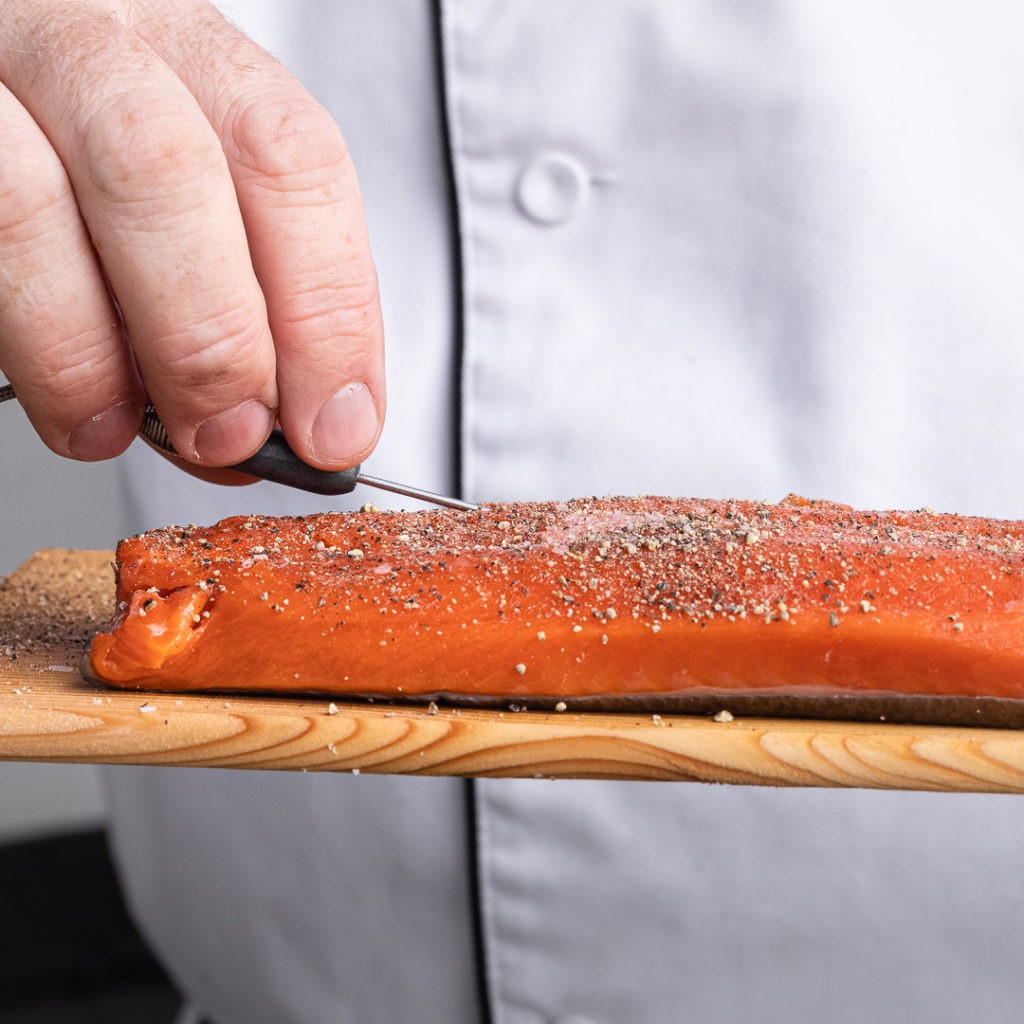
The USDA says that salmon needs to be cooked to an internal temperature of 140°F (60°C) for food safety. If you have any immunity issues, that's a good idea, but for the tastiest salmon, most chefs call for a pull temp of 125°F (52°C). We set our high-temp alarm on our Smoke X2 for 125°F (52°C) so that we could get the best texture on our fish.
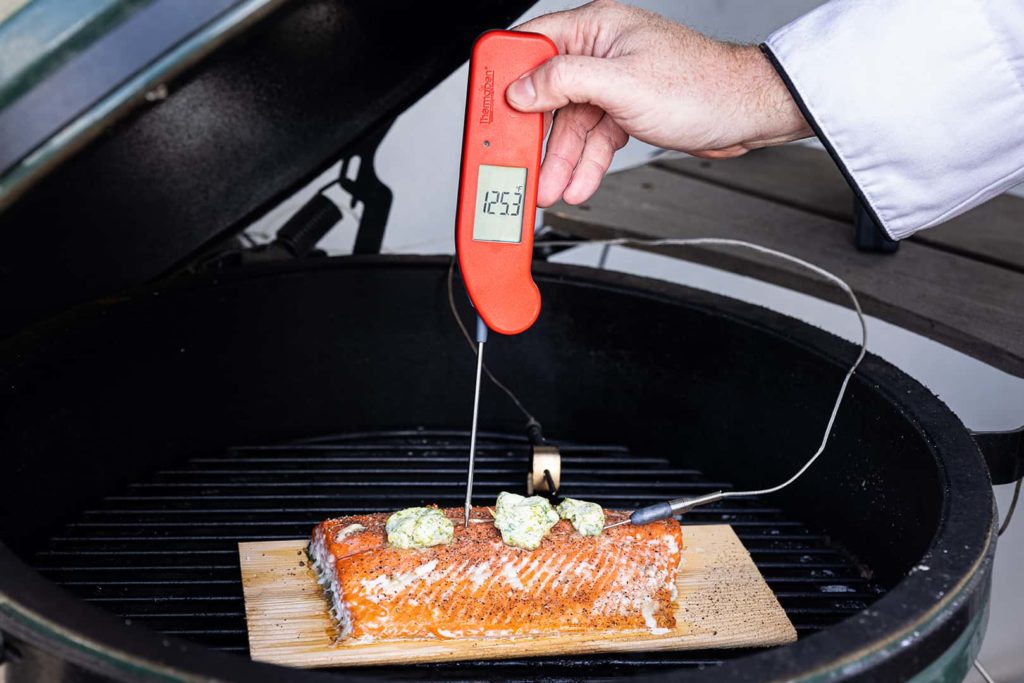
How long the salmon must cook depends on its initial temperature as well as its size and thickness. Our piece of wild-caught sockeye took about 25 minutes to cook. When the alarm sounded, we verified the temperature with our Thermapen® ONE and dotted the fish with some lemon-dill compound butter.
It was very tasty.
Whether you're eating salmon because you're trying to be healthier or just cooking it up because it's dang tasty, this method is a great way to go. It's a fantastic way to let the quality of the fish itself sing out. With the temperature monitoring and critical temps we've provided here, it's incredibly easy to get right. And it's really good for any time of year—heck, I cooked it in mid-January.
I hope you give it a try soon. Make it, share it with a friend, and show them what you've learned. They'll be happy you did, and so will you.
Description
Cedar-plank grilled salmon, with method adapted from HeyGrillHey.com
- 1 piece of salmon, about 1 lb
- Salt and pepper
- 1 cedar plank
- 1/2 C (1 stick) butter
- zest of 1/2 lemon
- 2 Tbsp chopped fresh dill
- 2 hours before cooking, soak your cedar plank in a bowl of warm water.
- Preheat your grill. Use Billows and Smoke X2 to get the temperature to 375°F (191°C). Keep the grill lid closed.
- Season your salmon—somewhat generously—with salt and pepper.
- Lay the salmon on the cedar plank and probe it with a 2.5″ needle probe.
- Place the probed salmon on the plank in the grill and close the lid.
- Set the high-temp alarm on the meat channel of your Smoke X2 to 125°F (52°C).
- Cook!
- While the salmon cooks, prepare your compound butter by mixing the butter, lemon zest, fresh dill, and some black pepper to taste together. You can do this in a mixer or just mash it all together with your hands. Set aside at room temperature.
- When the high-temp alarm sounds, verify the doneness with your Thermapen ONE. Make sure no part of the salmon is cooler than 125°F (52°C).
- Dot the salmon with the softened compound butter (you won't use all of it), remove it from the grill, and serve it up!
Notes
Note: how to cook cedar plank salmon in the oven
If you want to cook this dish but don't have a grill, no problem. Prepare the plank and the salmon exactly as you would for the grill, but cook it in a 375°F (191°C) oven. Place the plank on a rimmed baking sheet to prevent any stray juices from dripping in your oven.

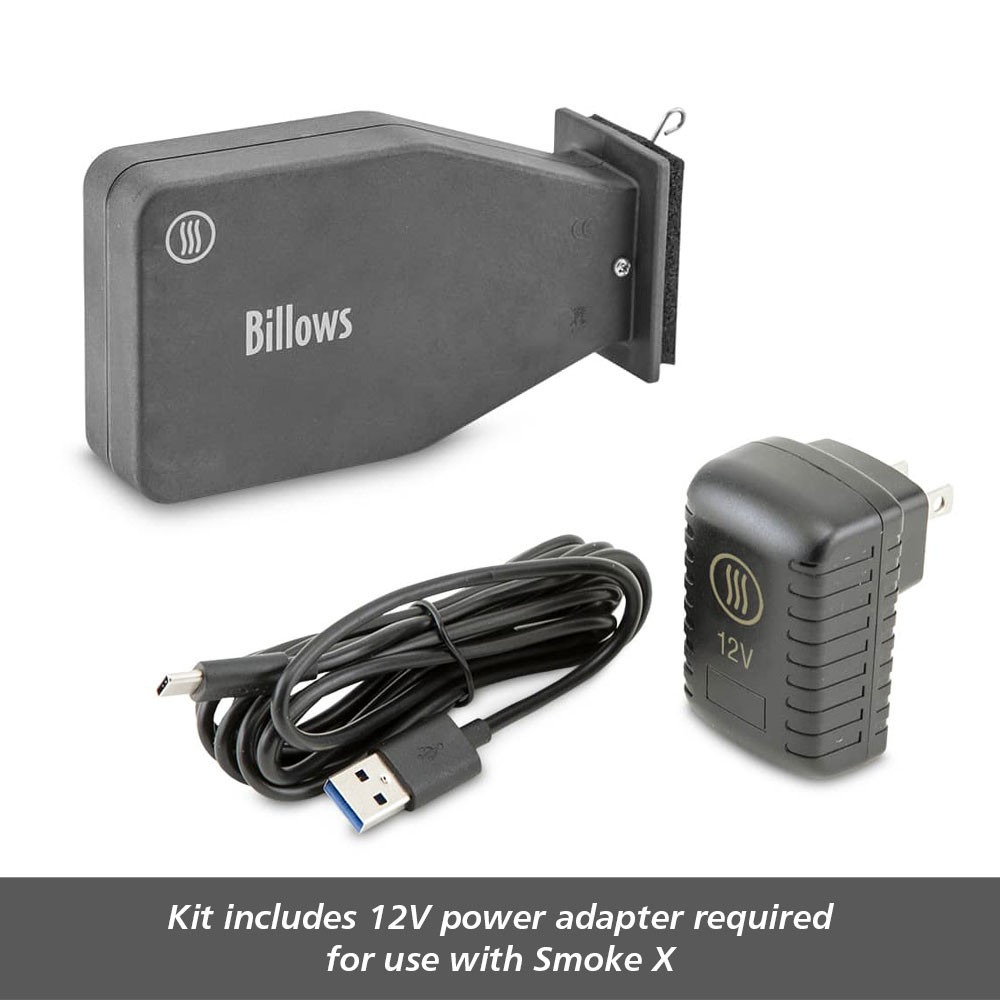

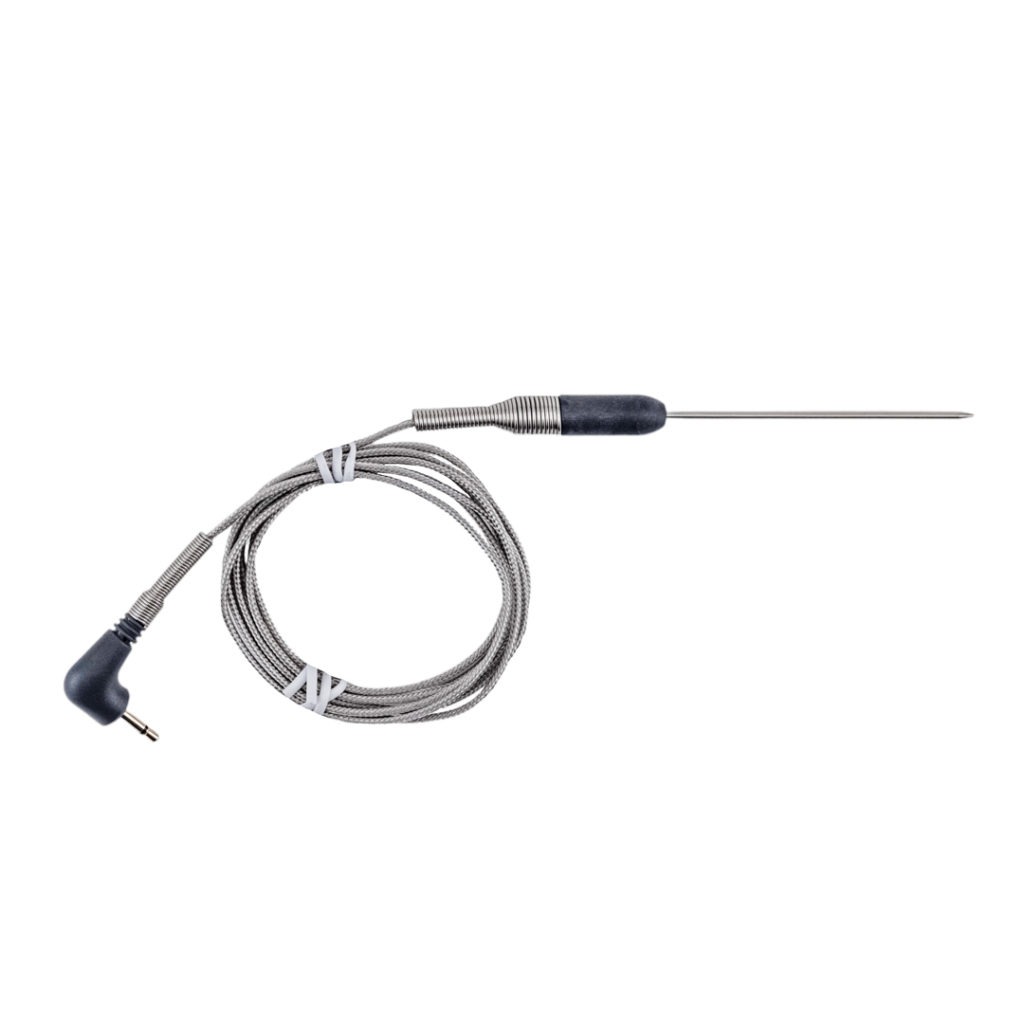
Source: https://blog.thermoworks.com/fish-seafood/grilled-cedar-plank-salmon/

0 Response to "Can the Cedar Plank Used to Cook Cedar Planksalmon Be Used Again"
Post a Comment